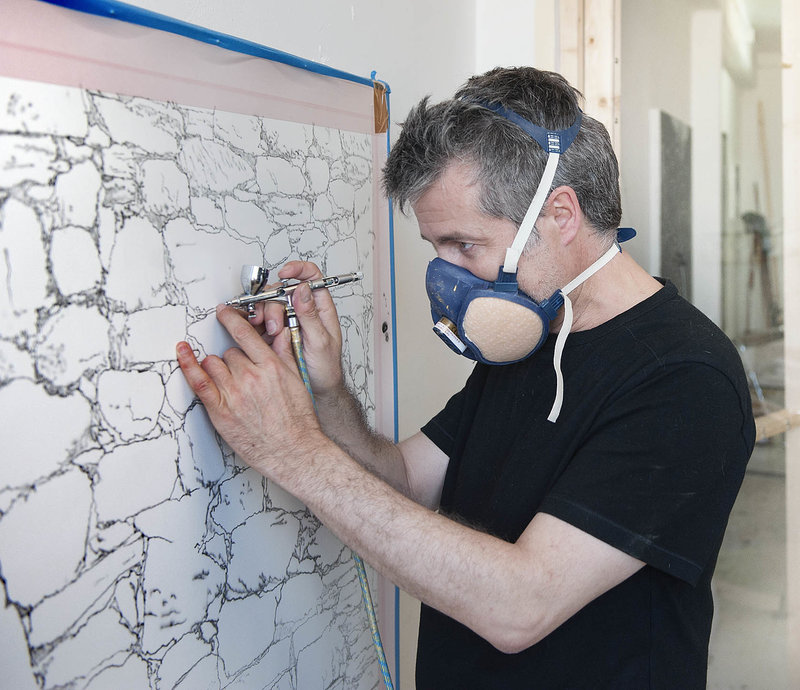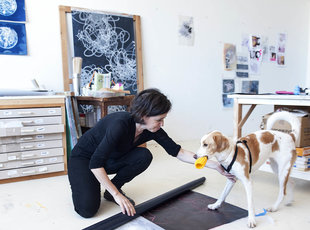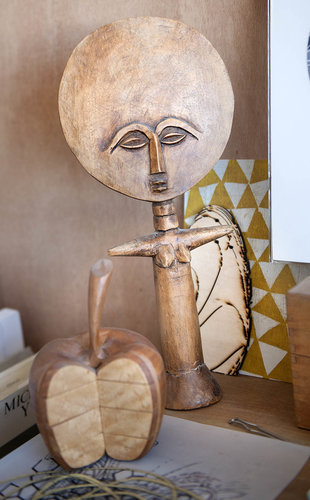Micro and macro
The contrasting universes of the Poblenou artists Jo Milne and Jordi Fulla
First let us establish the origins of these two artists. Jordi Fulla (1967) was born in Igualada, has a strong connection with Terrassa, but lives and works between the Poblenou neighbourhood of Barcelona and Hostafrancs, in Lleida’s Segarra region. Meanwhile, Jo Milne was born in Edinburgh but settled in Barcelona a few years ago, after first spending some time in Italy. Both of them share feelings as well as creative spaces.
The place where they spend the most time together is in their shared studio in Poblenou. It is the ideal spot for artists, as this area renovated for the Barcelona Olympic Games saw its industrial legacy turned into an artistic one. However, largely due to the rising rents and an influx of tech startups, it is a transformation that has never quite delivered a full-blown artistic quarter in the Catalan capital.
In any case, the couple work in one of the former industrial buildings that has a number of storeys, in a study that is both light and open, without any columns, which allows the artists to arrange the space to suit whatever project they might be working on. It also gives them the option of making and changing their own individual spaces, because the work of each has its own particular requirements: “Jo is more expansive, she takes up all the space she can. As for me, I need everything much closer together,” says Fulla.
Paradoxically, their methods of work are the opposite of the nature each artist’s work. While Milne’s tools and materials might be spread out, her artistic universe focuses on microcosms. The Scot is micro, while the Catalan is macro. She uses a microscope, while he uses binoculars. She dives into a world of fractals and sequences, detecting the inner structure of things, while he is more organic, with a more distant and external point of view. Yet, they tend to complement each other rather oppose each other, making their studio a place of ordered chaos as well as of lax order.
Although their work appears to move within scientific parameters, there is also a good dose of mysticism to it. It is a spirituality in the Japanese style, where art, processes, time and communion with others are components that together create something more akin to religion. This can clearly be seen in Fulla’s exhibition in the Montserrat Museum, on until September 11. Or in Milne’s recent exhibition, which took place at the Vilacasas Foundation. Their trips to Japan have strengthened this spiritual side of their art. This, for example, is apparent in the series Fulla did on dry stone structures in rural areas, such as walls and the huts used by shepherds or for storing agricultural tools.
Yet the hats, souvenirs, sculptures and paintings by other artists (such as a portrait Perico Pastor painted for them), containers of exotic foodstuffs, books and posters all around the studio show that the couple’s interests are far from limited and are, above all, shared. And there is something else that ties these two very different artists together: their dog Shima, who wanders the studio unaware of the human artistic expression surrounding her.




















